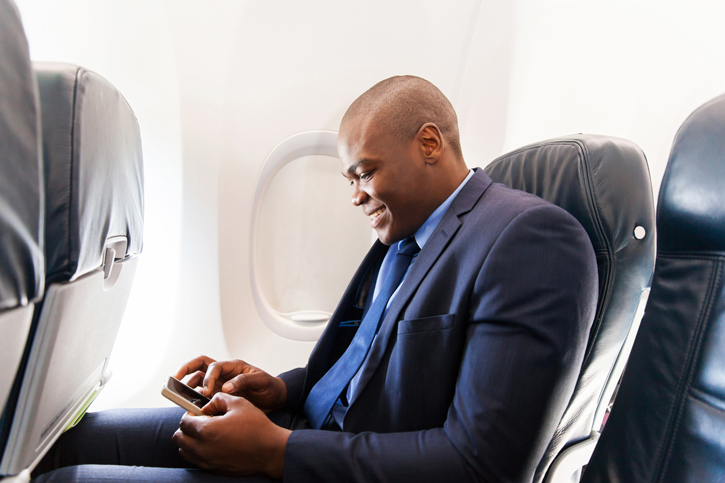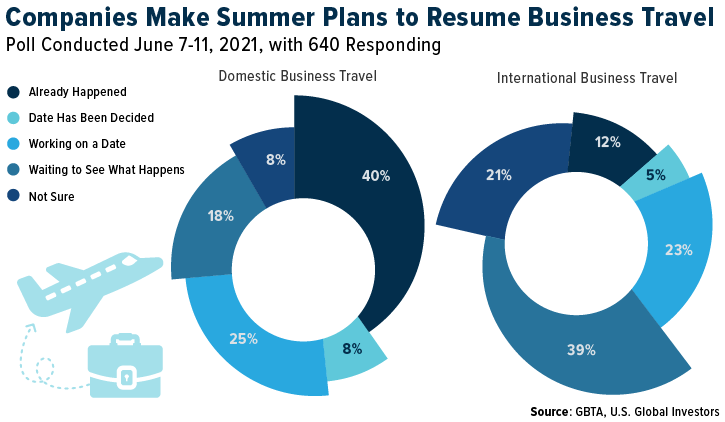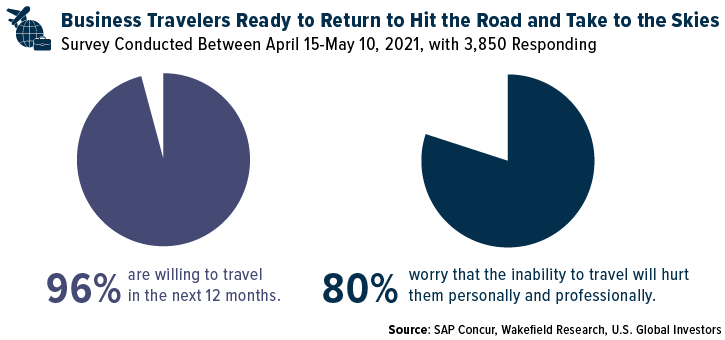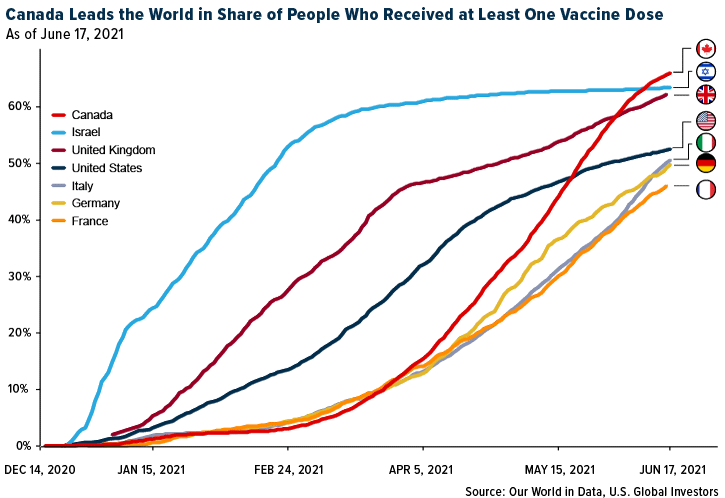
More than 2.1 million people boarded scheduled flights in the U.S. on Sunday, June 20, a 160% improvement from where we were at the beginning of the year. Leisure travel is mostly back as California and New York reopen their economies and as the European Union (EU) formally adds the U.S. to its list of countries approved for entry.
Cautiously Optimistic on Business Travel
A poll conducted this month among members of the Global Business Travel Association (GBTA) showed that domestic business travel is well on its way to recovery. 40% of respondents said that business travel within the country where their firm is based has already resumed, while a third said that their company has either decided on a start date or is working toward a date. Only 18% said that their company was “waiting to see what happens.”
International business travel is another story. Only 12% of respondents said business travel outside of the country where their company is based has resumed, a sign that we still have a long way to go yet.

Some companies’ hesitancy to resume business travel, though—particularly on the domestic side—is not in alignment with the results of another survey, which show that a vast majority of workers are more than ready to hit the road and take to the skies again.
According to SAP Concur’s Global Business Travel Report 2021, released the week ending June 18, a whopping 96% of global business travelers said they were willing to start traveling again in the next 12 months. The reason being because 80% said they were worried that the inability to travel could hurt them not just professionally, but also personally.

Many people feel there is no true replacement to meeting clients and colleagues in person and attending live professional meetings and events (PMEs). Zoom fatigue is real, for women more so than men. Companies from Google to WeWork are working on introducing accessible holographic technology to be used in the office, but currently that technology is quite expensive, and the general appeal of the technology itself may not be so celebrated.
Ohio State University: Little Risk in Meetings and Events
If commonsense precautions are observed, more and more research has come out stating that meeting people in person and attending live events poses little risk. A new paper by a team of health care scientists with the Ohio State University makes the case that a return to PMEs is “inherently possible in the current environment.” The team studied several PMEs that took place during the pandemic and found that, if safety precautions were observed, they ended up not being super-spreader events.
“By setting standards to balance public health measures with meeting face-to-face, PMEs can help in a return to social interactions and networking,” the researchers write, adding: “As more of the population is fully vaccinated, these risks are further reduced.”
Will Canada Open Its Borders for All Forms of Travel?
California and New York—the number 1 and number 3 largest states by GDP—lifted nearly all restrictions in the week ending June 18, as the share of residents who have received at least one vaccine dose surpassed 70%.
This is hugely positive, as both states were among the earliest and hardest to be hit by the virus in 2020.
The U.S. awaits reopening of the U.S.-Canada border to non-essential travel. The border is the longest in the world at 5,525 miles, and for every month that it remains closed, the U.S. economy loses $1.5 billion in potential travel exports, according to the U.S. Travel Association. That’s enough to support many thousands of American jobs.
The current restrictions, which have been in place since March 2020, were originally set to expire June 21, but they were extended for at least another month.

As of right now, it is unclear when Canada will reopen its border for all forms of travel. With the increased amount of the Canadian populace getting vaccinated, we may not have to wait too much longer.
Interested in investing in the travel industry? Learn more about the U.S. Global Jets ETF by clicking here!
